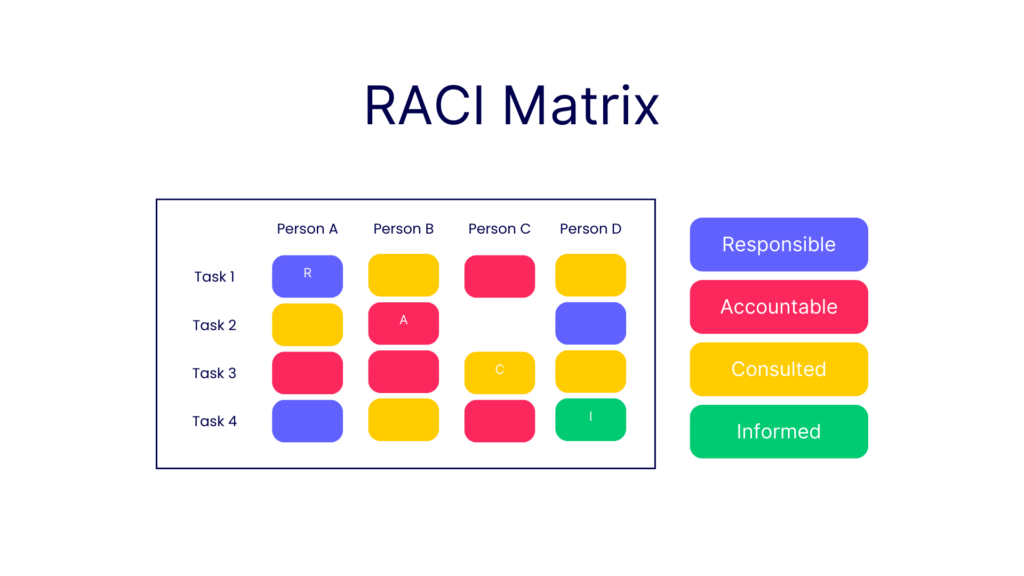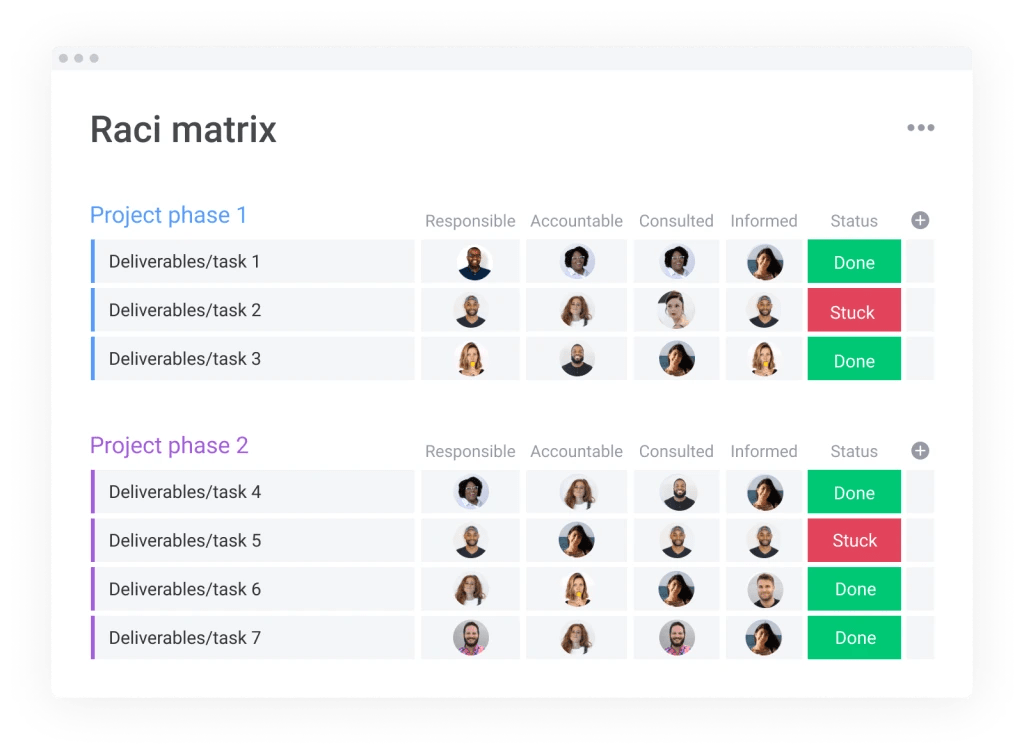What is a RACI Matrix?
A RACI Matrix is a responsibility assignment chart that clarifies roles and responsibilities within a project or organization. This straightforward yet powerful tool maps out who should be doing what by assigning four key roles to project tasks: Responsible, Accountable, Consulted, and Informed. Think of it as your project’s organizational compass, guiding team members through their responsibilities while ensuring nothing falls through the cracks.

Understanding the Four RACI Roles
The effectiveness of the RACI Matrix lies in its clear definition of four distinct roles that can be assigned to any project task or deliverable:
Responsible (R)
These are the doers – the individuals who actually perform the work. They’re hands-on with the task and directly responsible for its completion. Multiple people can be responsible for a task, but it’s crucial to ensure clear coordination among them.
Accountable (A)
This is the ultimate decision-maker or approver for the task. The “buck stops here” person who ensures the task is completed correctly. A fundamental rule of RACI is that there can only be one Accountable person per task – this prevents confusion and ensures clear decision-making authority.
Consulted (C)
These are the advisors who provide input and expertise before and during the task. They engage in two-way communication with the Responsible and Accountable parties, offering valuable insights and feedback.
Informed (I)
These stakeholders need to be kept in the loop about task progress and completion. While they don’t directly contribute to the work, they might be affected by its outcomes or need to know for coordination purposes.
Benefits of Implementing a RACI Matrix
When properly implemented, a RACI Matrix delivers numerous advantages to project teams and organizations:
- Enhanced Clarity: By explicitly defining roles and responsibilities, team members understand exactly what’s expected of them and others.
- Improved Efficiency: With clear ownership and accountability, tasks move forward more smoothly, reducing delays and redundant work.
- Better Communication: The matrix creates a framework for communication, ensuring the right people are involved at the right times.
- Reduced Conflicts: Clear role definition minimizes territorial disputes and reduces the likelihood of tasks being overlooked or duplicated.

Creating an Effective RACI Matrix
Developing a successful RACI Matrix involves several key steps:
- Identify Tasks and Deliverables: List all project activities and deliverables that require role assignment.
- Define Stakeholders: Determine all team members and stakeholders who should be included in the matrix.
- Assign Roles: Carefully consider who should be Responsible, Accountable, Consulted, or Informed for each task.
- Review and Refine: Ensure that assignments make sense and follow RACI principles, such as having only one Accountable person per task.
Common Pitfalls to Avoid
While the RACI Matrix is straightforward in concept, several common mistakes can reduce its effectiveness:
- Over-Complication: Resist the urge to assign too many people to roles. Keep it as simple as possible while maintaining effectiveness.
- Incomplete Implementation: Ensure all tasks have appropriate assignments and that the matrix is kept up-to-date throughout the project.
- Poor Communication: The matrix is only effective if team members understand and actively use it. Make sure everyone knows their roles and responsibilities.
Maintaining and Updating Your RACI Matrix
A RACI Matrix isn’t a “set it and forget it” tool – it requires regular maintenance and updates:
- Regular Reviews: Schedule periodic reviews to ensure the matrix remains current and effective.
- Team Feedback: Encourage team members to provide input on how well the assignments are working.
- Continuous Improvement: Use lessons learned to refine and improve role assignments in future projects.
By implementing a well-thought-out RACI Matrix, organizations can dramatically improve their project execution and team collaboration. Remember, the goal isn’t just to create a chart – it’s to establish clear accountability and communication channels that drive project success. When everyone knows their role and responsibilities, projects run smoother, deadlines are met, and teams work together more effectively.


